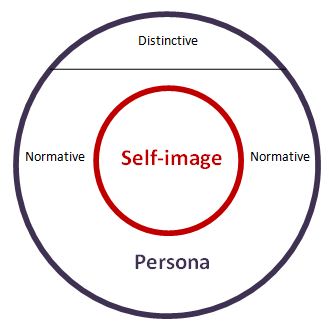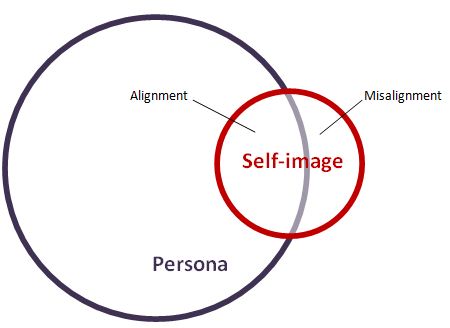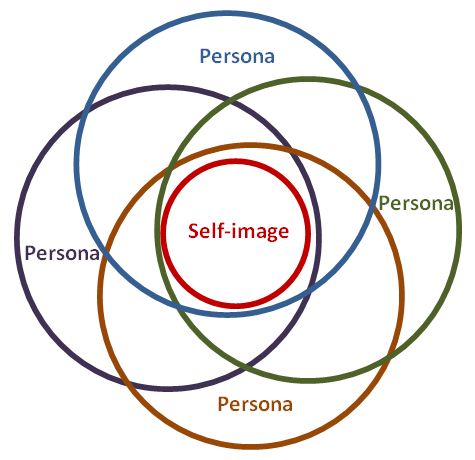Blogging as a self-presentational persona: Why I have a WordPress and Tumblr blog
I revived my Tumblr blog last week on a whim when I hooked it up to my Instagram account. Next thing I know, I am posting one to two posts a day and discovering a voice I forgot I lost. Mark Leary and Ashley Allen help me understand how and why we maintain multiple self-expressions in their journal article Self-Presentational Persona: Simultaneous Management of Multiple Impressions.

Understanding multiple impressions of our self-presentational persona
My journey to multiple blogs across WordPress and Tumblr has been shared by many other bloggers. Leary and Allen highlight three areas to consider when managing our self-presentations:
1. Normative versus distinctive persona components

Our persona has a normative component that generalises how we interact in society. Most people exhibit common behaviours when in a church setting as compared to how people relate in a romantic relationship. You expect a certain voice in a management blog as compared to a relationship or pop culture blog.
Our persona also has a distinctive component that reflects how our self-presentation differs from the norm. Your leadership approach in a business networking function will differ from others in the same setting, but still be socially acceptable. Your blog popularity may depend on how well you are recognisable in your industry but remain distinct as “you”.
The more important our perceived image is to our identity, the less likely we are to vary from the norm. You are more likely to toe the corporate and popular line if your content impacts on your future. This is also why there is creative freedom (and potential career consequences) if you mentally disconnect your perceived perceptions from your content.
2. Persona alignment with self-view

Our self-perception is constrained by reality. People expect you to “be yourself” and be who you claim to be. Deceptive impressions are negatively sanctioned by a society looking for authenticity.
We are also significantly more likely to present ourselves aligned with our self-view when we are closer to the other party in the relationship. For example, it is much easier to “be ourselves” when we feel a connection with our audiences, such as around a respected colleague or family member. On the other hand, the gap between behaviour and self-image increases when we do not know or like the other party, such as a room full of strangers or someone perceived as an enemy.
3. Multiple self-presentation personae

Two extremes may exist. Some may have a different package of images for every situation, being “all things to all people”. This may make them adaptable but also potentially viewed as unstable, unpredictable, or manipulating.
Others may present the same image in all situations, expressed as “This is just who I am, they can take me or leave me.” Such sentiment may score points for consistency and authenticity, but at a cost of being inappropriate in some or many situations depending on how the image aligns with social norms.
Most people in real life maintain three to six personas. Translating this to social media personae, people have multiple categories of “work”, “personal”, and “hobbies” for a blog. They may maintain different “voices” for the professional LinkedIn account or the more personal Facebook environment.
Applying theory to who I am on WordPress and Tumblr
My WordPress blog has evolved into weighty, research-driven critiques on the cross-section of social science, organisational development, personal development, and digital. Originally titled “Sideways Thoughts”, my posts have become less sideways over time. I also found my blog and my perspective circling each other in an overriding critical trend defined by my University studies and work experiences. Posting my thoughts on a James Bond movie would now seem out of place, but I still desired a lighter and more frequent expression.
Tumblr on the other hand is what I originally intended for WordPress, a quick snippet of where I am at the moment in more words than Twitter will allow. I could create another WordPress blog for this purpose, but Tumlr also gives me the opportunity to experience another platform and community.
Being aware of the theory behind self-expression helps keep our social media personae from becoming fragmented or over-exposed:
- Normative and Distinctive: Understand the general audience to align with what is considered normative, while understand ourselves to capitalise on what makes us distinctive. I post in the space of organisational theory, but it is my experiences that would make my content different.
- Alignment of personae and self-view: Keep content and voice aligned with self-image. The more connected we are with our audience, the easier this will be. I define who I am through my posts, but those posts also need to be aligned with who I am in my workplace, community groups, and family.
- Know your multiple personae: Know your multiple personae and which social media channels go with which personae. Either try not to mix the streams, or align your personae so cross-over is not an issue. I am Facebook friends with colleagues, clients, and family. My blog posts will be read by potential employers and employees. I read my content through all their eyes when I post.
